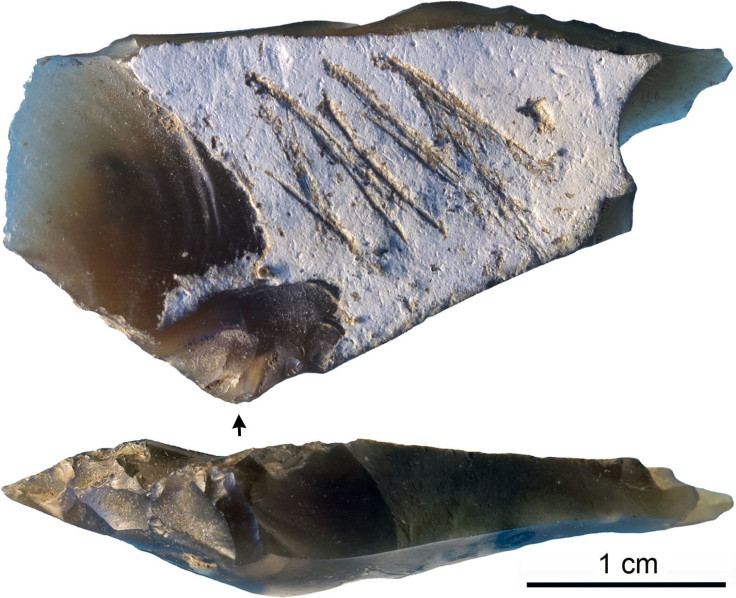35000-Year-Old Engraved Stone Demonstrates Neanderthal Symbolism

A group of researchers from the University Of Bordeaux, France, have come up with a new interpretive framework which recently determined markings deliberately etched by a skilled Neanderthal on a 3.5 centimeter-long rock flake.
Cave artwork is a crucial part of human history. It gives us insight into the lives of our ancestors, but in most of the cases, the intent behind the symbols left by early humans remains a mystery. We can try and interpret the meaning of markings on ancient rock flakes, but one cannot be sure if those incisions were made by mistake or deliberately to send some sort of a message.
Archaeologists have identified some 27 sites carrying incised stones from the Middle and Lower Paleolithic period across Europe and the Middle East. Some of these simple engravings could have been a result of something functional like butchery or related activities, while others could be purposeful symbols with a meaning.
To get more insight into this, the research team, led by Ana Majkic, focused on a stone discovered from Kiik-Koba Cave in Crimea. The chalky outer layer of the tiny flake carries uneven lines, which were probably made by Neanderthals some 35,000 years ago, according to other evidence uncovered from the same site.
That said, the group used the stone as a test subject and applied their framework to understand the origin of its markings. Essentially, they prepared a set of questions relating to the features of the lines in order to reasonably evaluate what actions might have played a role in their formation.
From the naked eye, the uneven lines on the stone look messy, with many superimposed over the others, but a closer, microscopic examination and 3D reconstruction of the grooves revealed they were made by a skilled Neanderthal craftsman with communicative intent and attention to detail.
During the observation, the group found the incisions were clean-edged and had a V-shaped cross-section, something that could have been the work of a right-handed craftsman using a sharp stone tool, as per Ars Technica. They also noted the near-perfect fitting of the lines, which could not have been produced on a stone this small without well-controlled motion of hands. Nearly all the lines had clear starting points with visible grooves, which faded towards the end.
The exact meaning of these markings is difficult to understand. They could have been made by the Neanderthals without any reason or could have been used for something simple like counting. But all these features and the concentration of the markings towards the center and not on the edges has led the researchers to posit that the contrast between the whitish background and heavily hashed center might have been “used to recall [a piece of] information to the flake user or eventually communicate one when the tool was passed to somebody else,” according to the study.
The group now plans to improve their framework and use it to gain more insight into ancient artifacts from different ages of human history.
The study, titled “Assessing the significance of Palaeolithic engraved cortexes. A case study from the Mousterian site of Kiik-Koba, Crimea,” was published May 2 in the journal PLOS One.
© Copyright IBTimes 2024. All rights reserved.





















